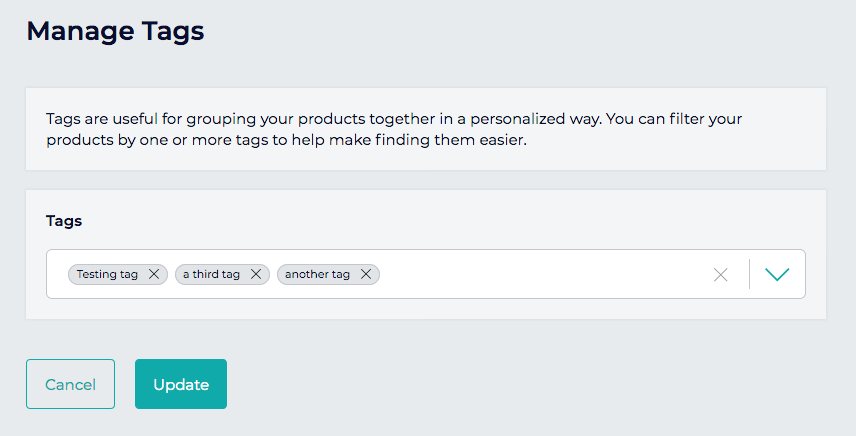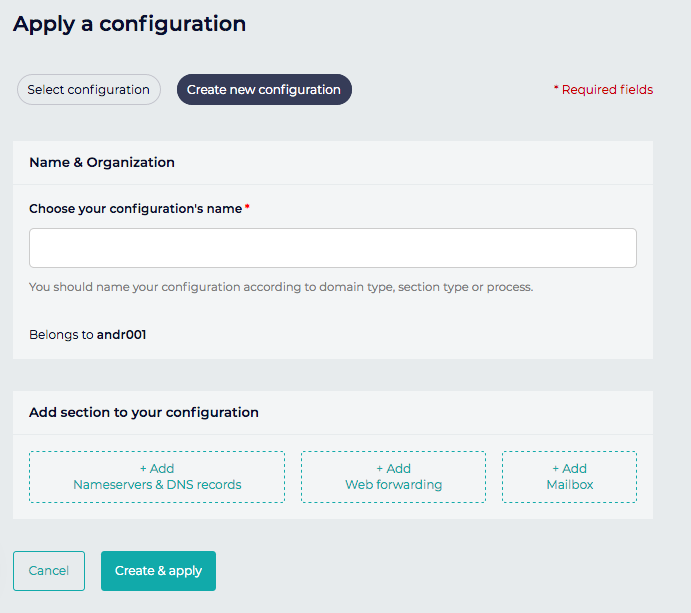As anyone with a cluttered (virtual) desktop, a mailbox full of old emails, or dozens of open browser tabs per session can attest, it’s a whole lot easier to just let emails, files, and tabs accumulate than to do the painstaking work of organizing them, or heaven forbid, paring them down.
But organizing your digital “possessions” is as crucial to being healthy and productive as organizing your physical space is. The only difference is it’s much easier to perpetually sweep digital messiness, with its lack of pesky, real physical attributes, under the proverbial rug.
Maybe your domain name portfolio is one such digital area in desperate need of organization. Companies have a tendency to accumulate domain names for a variety of reasons, and as the list of domains you own grows, it can soon become difficult to keep everything straight. Which domains need to be renewed when? Who is the registrar contacting in case of a problem? Knowing the answers to these questions for a large number of domains isn’t always as easy as it may seem.
Managing a large portfolio of domains doesn’t have to be unwieldy, though. Here’s how you can get a handle on your large domain portfolio.
What’s your domain portfolio strategy?
Whether or not you set out to buy many domains with a specific plan in mind, or you or your coworkers acquired them piecemeal for different objectives, having a strategy for your domain portfolio is an essential part of keep it organized.
This strategy will guide your decisions—both in growing your domain portfolio in an organized way, and in paring it down to size when necessary.
There are many possible domain portfolio strategies, but to keep things simple, let’s consider all of these to fall under two broad categories based on the general goals of registering multiple domain names: a defensive domain registration strategy, or a promotional domain registration strategy.
Defensive registration strategy
A defensive registration strategy is when you’re buying domain names not because you want to use them yourself, but because you are protecting them from being used by someone who might use them to hurt your business.
This strategy is the one you’d use to protect your company’s intellectual property, like a brand name or a trademark. It’s also what you’d use to anticipate future moves your company might make—like moving into a new geographic market. Finally, this is a good strategy if you’re worried about losing customers to confusion or even fraud like phishing, that might use similar or misspelled versions of your domain name to dupe your customers.
Promotional registration strategy
On the other hand, a promotional registration strategy is one where you’re buying domain names because you want to use them—specifically to pump up your business.
This strategy is the one you’d use if you want to use your domain name portfolio to grow your business, improve your SEO, maximize your exposure online, and drive sales, especially e-commerce. If you have a location in another country, you might register the corresponding country-code domain to your main one—a .mx for your office in Mexico City or a .de for your Berlin branch.
This strategy could also involve domains for single-use marketing campaigns, registering keyword domains or your brand name in a top-level domain related to your market.
You might follow one of these strategies or the other or you might combine these strategies, but being aware of which of these objectives your portfolio serves is key. Now it’s time to dig into some specifics, starting with …
Who manages your domains?
This isn’t just a question of who’s ultimately in charge, but it’s a broader question about who needs to do what actions with your domains.
Here are some key actions:
- Renew domain names
- Connect domains to your website hosting
- Connect domains to email hosting
- Make payments
- View invoices
- Transfer domains between registrars
Make sure to figure out who has the authority in your company to approve these actions, and who should be the one performing these actions.
Read about managing permissions at Gandi.
Where do your domains go?
If you’re using a defensive registration strategy, your domains may just point to a parking page, or they may redirect to your main corporate website.
If you’re using a promotional registration strategy, you might use 301 redirects, you might resolve your domains to an e-commerce site, or you might match foreign-language domain names to language-specific websites.
When do you manage your domain portfolio?
Regardless of your strategy, there are a few occasions you might need to manage your domain portfolio, whether that means buying new domains to correspond to company changes, pointing your domains to different websites, or transferring permissions to new people. These include:
- When your company enters a new market
- When you introduce a new product or service
- When you switch to new hosting servers for email or your website
- When your company’s address changes
- When an employee with permissions gets transferred, promoted, or terminated
- When you acquire a company, get acquired, or merge
- When you consolidate your domain portfolio
Protect your domains
A major concern for anyone managing a domain portfolio is keeping it safe and secure.
The safest a domain can be is when it meets the following criteria:
- Registry lock is active
“Registry lock” is a protection at the level of the registry that blocks any sensitive update to your domain name. Changes can only be done by a small number of your registrar’s employees specifically authorized by the registry. That means changing DNS servers, transferring a domain name, modifying domain contacts, and deleting a domain name all require manual approval. - Autorenew is active
Automatic renewal of your domain name means that when a domain name expires, it will be renewed automatically and doesn’t require anyone to manually renew it. This feature is a good failsafe in case you forget to renew a critical domain name. - It’s registered for the maximum registration period
Most top-level domains let you register your domain name for up to 10 years. Keeping your domain names registered for this maximum period is another preventative measure to keep your domain name from needing to be renewed automatically.
It’s not really practical to activate all three of these on all of your domain names. Using Registry lock on domains that you need to re-configure frequently could really slow down your processes, and registering hundreds of domain names for 10 years apiece can get expensive, especially for top-level domains that can range $50–$100 per year.
Your domain strategy can help point you in the right direction as to which domains are the most valuable and should therefore be the most protected.
Paring down your portfolio
On the flip side, you might have domains that aren’t very valuable at all. Some of them might be worth hanging onto, but not protecting too closely, but you should consider deleting or letting expire domains that aren’t generating traffic, that don’t have DNS records on them, that are related to an old marketing promotion or slogan that’s run its course, or related to a product or service you no longer offer.
Length of registration makes domains valuable to squatters to pick up using automated drop catchers who might then be able to use them against you.
Managing many domains at Gandi
This all gives you a lot to keep track of. Luckily, we have some suggestions for how you can do this with a domain portfolio at Gandi.
Use Table view to see more information about your domains
Table view lets you view, select, and apply settings to multiple domains at once.
In table view, you’ll see the domain name, the nameservers, the owner, and whether the domain is protected against transfers. You can sort by expiration date and export your list as a CSV file.

You can also filter your list of domain names by certain criteria to see only domains that expire in the year 2030, for example, or only the ones with transfer lock or automatic renewal enabled or disabled.
Use tags to provide more details
You can add tags to domain names to provide more information about them. For example, you might add the tags “typo domain” to domains that you’ve bought to guard against typo squatting. Domains can have more than one tag.

You can then use the search to filter by tags as well.
Use configuration templates to apply the same configuration to multiple domains
If you have a DNS configuration that applies to multiple domain names, one place they all need to be forwarded to, or an email address that should be set up on all of them, configuration templates can help.

Use teams to delegate permissions
Teams give you fine-grained control over the permissions on domain names. You can set permissions on your teams related to domains, billing, and other administrative functions.

Use Gandi Corporate Services
Finally, you can sign up for Gandi Corporate services to help you with the finer points of managing your portfolio.
Tagged in Nom de domaine



